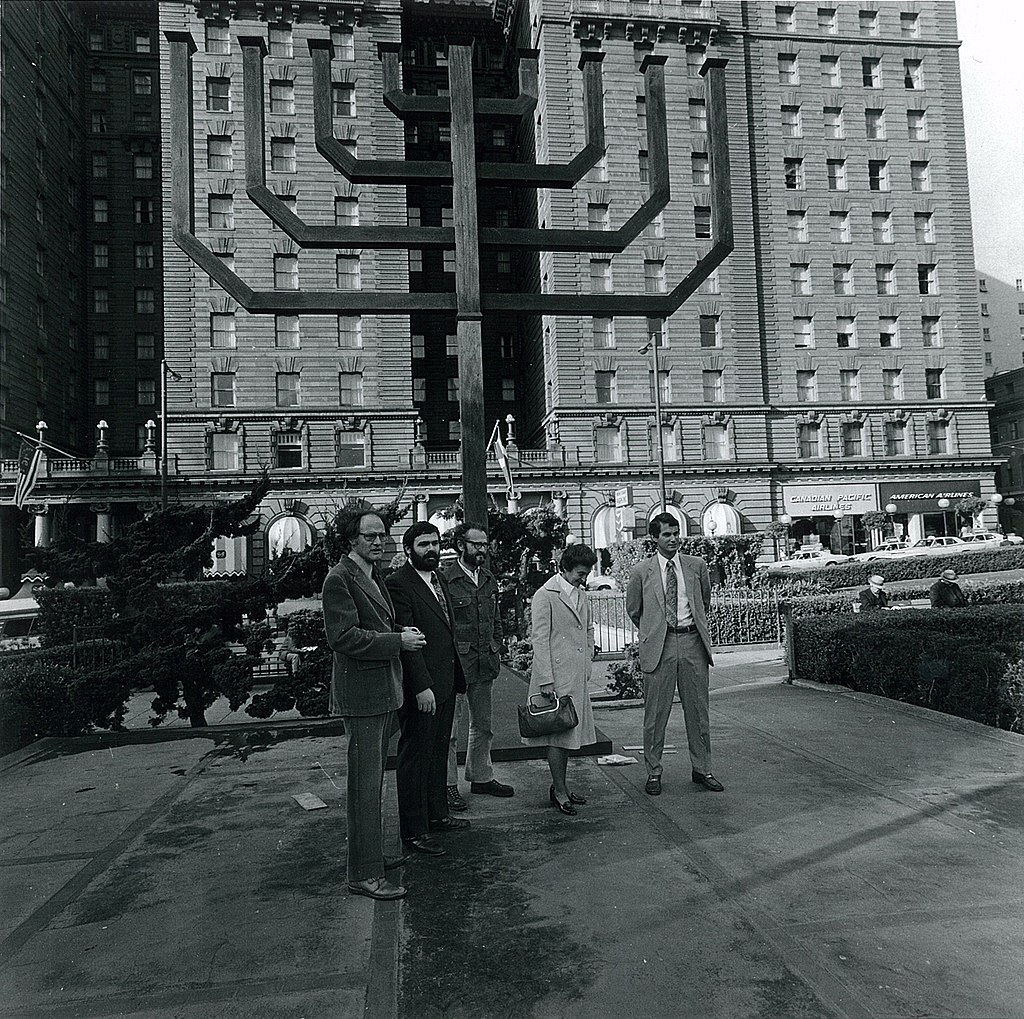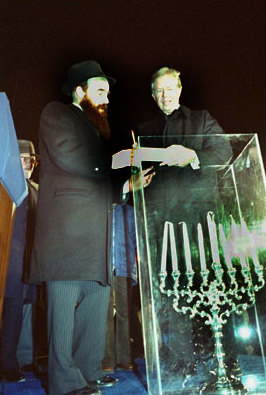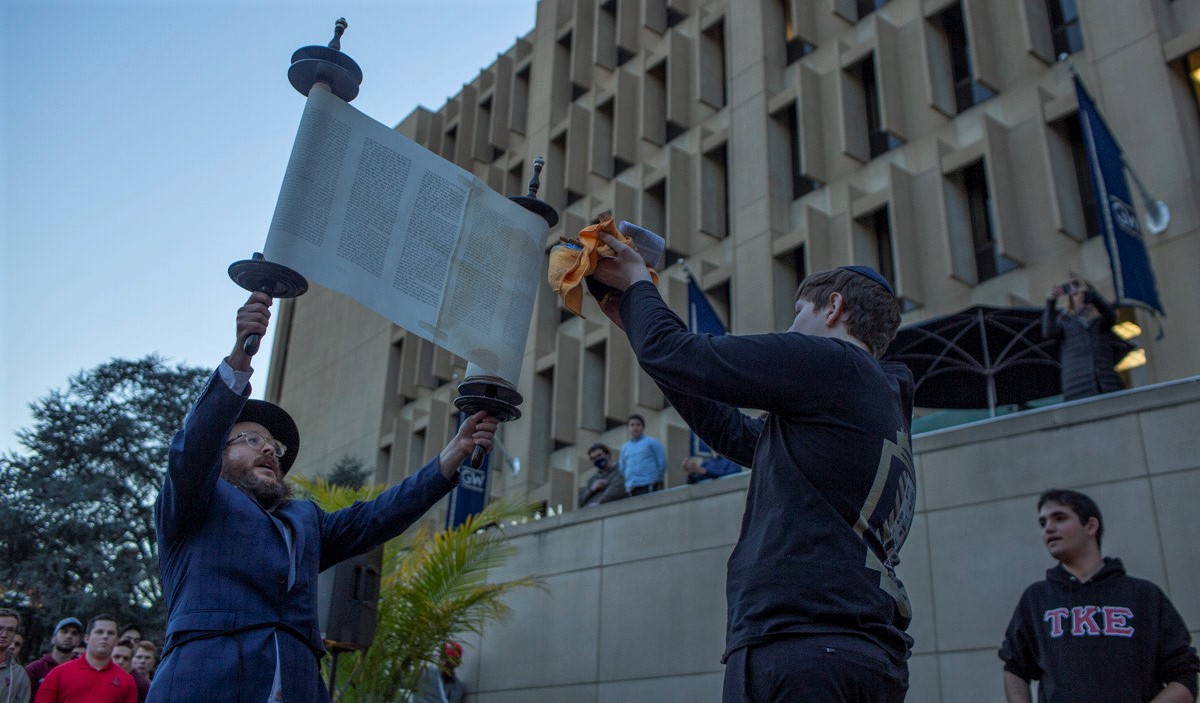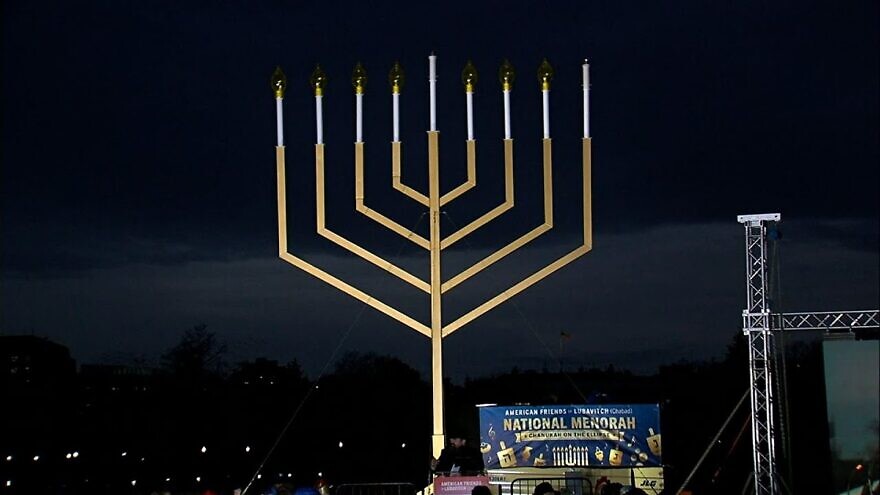The North MoPac Expressway runs up Austin’s west side, a busy, eight-lane artery that speaks to the city’s expanding suburbs and the extravagant consumption of space that is uniquely Texan. It’s not a place that seems conducive to anti-Semitic demonstrations—or demonstrations of any kind, for that matter. But late last month, the MoPac came to national attention when a banner appeared on an overpass reading “Vax the Jews.” The sign bore the name of a neo-Nazi group. Several men were seen beside it giving the Nazi salute to passing cars.
The banner was one in a string of anti-Semitic incidents that rocked Austin that week, culminating in an arson fire outside Temple Beth Shalom on Nov. 1 that caused more than $25,000 worth of damage. On the day before the fire, the banner appeared over the MoPac again.
The event will be one of several of public menorah-lightings in the Austin area, including events at the capitol with the governor and at City Hall with the mayor, said Levertov.

It was done at the initiative of the Lubavitcher Rebbe, Rabbi Menachem Mendel Schneerson, who encouraged his followers to take the mitzvah of publicizing the Hanukkah miracle—pirsume nisa in Hebrew—quite literally. The Rebbe embraced his students’ innovation, promoting public menorahs as a triumph of light over darkness and an expression of Jewish pride.
The campaign caught on, and within a few years, large, V-shaped menorahs appeared outside state houses, from the Billy Graham menorah in San Francisco to the one outside the Kremlin. U.S. President Jimmy Carter kindled the first national menorah outside the White House in 1978—a tradition that has taken place ever since. This year’s 43rd lighting of the National Menorah, sponsored by American Friends of Lubavitch (Chabad), is scheduled for Nov. 28 at 4 p.m., as part of a Hanukkah ceremony on the Ellipse.
Initially, the idea encountered fierce pushback from Jewish groups, who saw the menorahs as undercutting their hard-fought battle to remove Christian symbols from the public square. Civil liberties groups joined the fight, and in 1989, the U.S. Supreme Court heard arguments in a case challenging a menorah outside a Pittsburgh municipal building. In County of Allegheny v. ACLU, the Court ruled 6-3 that public menorahs did not violate the separation of church and state because they had become a symbol of the secular holiday season. A subsequent Supreme Court challenge, in Cincinnati in 2003, cemented the menorahs’ constitutional status.
Today, public menorahs are so ubiquitous that they transcend denominations and even faiths. “Public lightings shine light in both the physical and the spiritual realms, and remind us that we are together, standing strong,” Neil Blumofe, senior rabbi at Conservative Congregation Agudas Achim in Austin, told JNS. “It is an important statement that the lights of Hanukkah represent a respectful and navigable way forward—a proper and holy way to utilize fire—especially after the arson attack in Austin.”

A grassroots campaign this year in Buda, Texas, persuaded officials to allow a menorah on town property for the first time. When they refused to fund it, as they did the public Christmas tree, Christian groups chipped in to make it possible.
‘Hanukkah with the Greeks’
Public menorahs seem particularly relevant at a time when 39 percent of American Jews say they have changed their behavior out of fear of anti-Semitism, according to a recent study by the American Jewish Committee titled “The State of Antisemitism in America 2021.” It’s a phenomenon that’s only intensified by the hothouse environment of a college campus, said Rabbi Yudi Steiner, director of the Rohr Chabad Center at George Washington University.
After a Torah scroll was found desecrated in a GW fraternity last month, Steiner launched a campaign to put up mezuzahs for Jewish students on campus. “There was tremendous buy-in,” he said. “At the same time, there are students who feel uncomfortable putting up the mezuzah because they feel they’re going to be targeted.”

Hanukkah’s message of religious freedom and spiritual light is the antidote to that mentality, said Steiner—“The theme could not be more perfect”—and he’s seizing the moment to create an unexpected alliance. On the last night of the holiday, Chabad is staging a public menorah-lighting co-sponsored by every fraternity and sorority at GW, an event they have playfully dubbed “Hanukkah with the Greeks.”
“These aren’t just individuals making a decision to support Jewish life,” said Steiner. “These are student organizations coming out and saying we want to do the right thing.”
Samson Kampler, a junior at GW, said last month’s incident at the fraternity wasn’t anything new. “Anti-Semitism doesn’t surprise us anymore. As a grandchild of Holocaust survivors, I find that really unfortunate.”
Public menorah-lightings on campus give him a sense of Jewish pride, he said, but, perhaps more importantly, they’re an opportunity to teach: “It’s giving insight to kids of other religions, to show that no matter what occurs across campus, we’re proud. We just want to celebrate our holiday.”


























